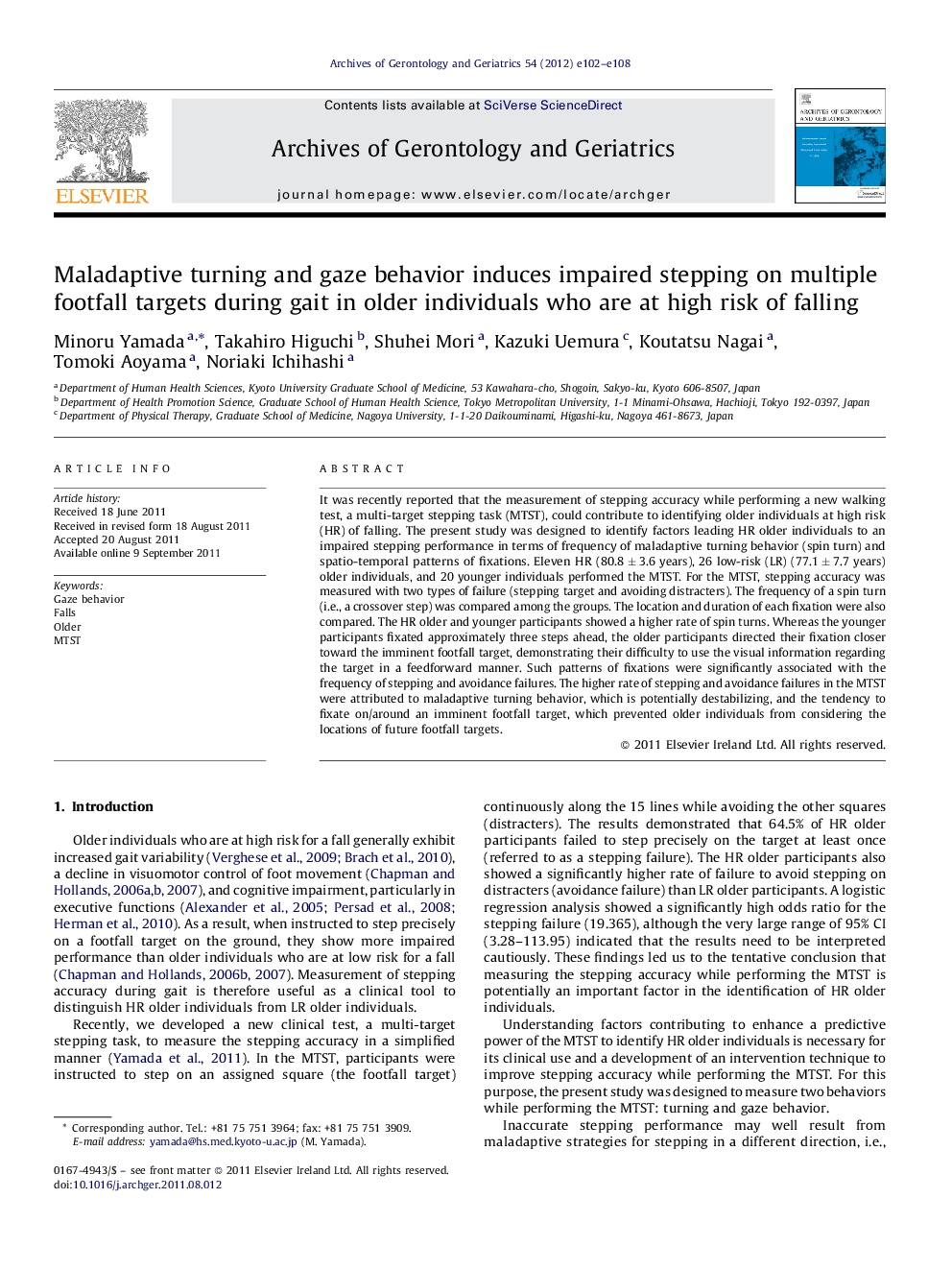| Article ID | Journal | Published Year | Pages | File Type |
|---|---|---|---|---|
| 1903007 | Archives of Gerontology and Geriatrics | 2012 | 7 Pages |
It was recently reported that the measurement of stepping accuracy while performing a new walking test, a multi-target stepping task (MTST), could contribute to identifying older individuals at high risk (HR) of falling. The present study was designed to identify factors leading HR older individuals to an impaired stepping performance in terms of frequency of maladaptive turning behavior (spin turn) and spatio-temporal patterns of fixations. Eleven HR (80.8 ± 3.6 years), 26 low-risk (LR) (77.1 ± 7.7 years) older individuals, and 20 younger individuals performed the MTST. For the MTST, stepping accuracy was measured with two types of failure (stepping target and avoiding distracters). The frequency of a spin turn (i.e., a crossover step) was compared among the groups. The location and duration of each fixation were also compared. The HR older and younger participants showed a higher rate of spin turns. Whereas the younger participants fixated approximately three steps ahead, the older participants directed their fixation closer toward the imminent footfall target, demonstrating their difficulty to use the visual information regarding the target in a feedforward manner. Such patterns of fixations were significantly associated with the frequency of stepping and avoidance failures. The higher rate of stepping and avoidance failures in the MTST were attributed to maladaptive turning behavior, which is potentially destabilizing, and the tendency to fixate on/around an imminent footfall target, which prevented older individuals from considering the locations of future footfall targets.
